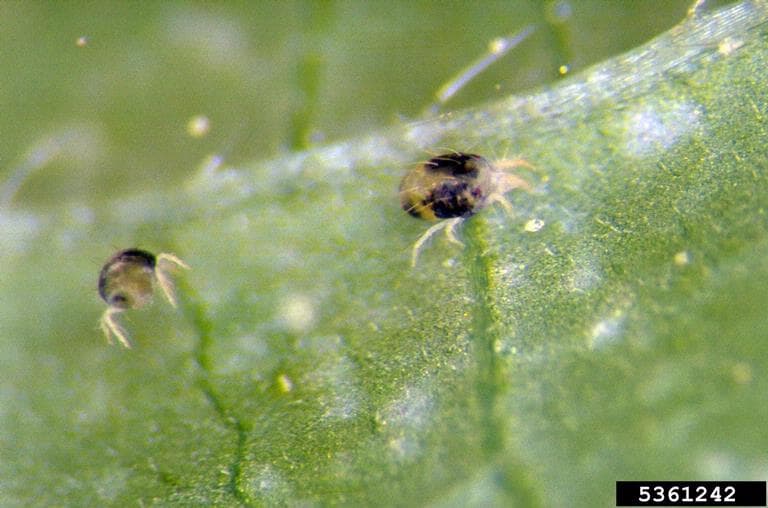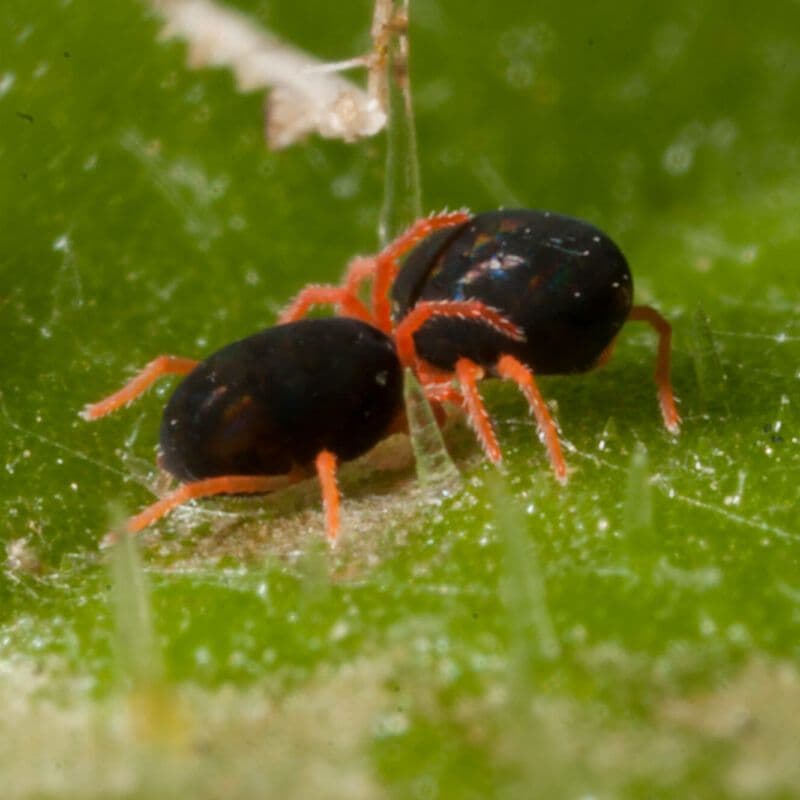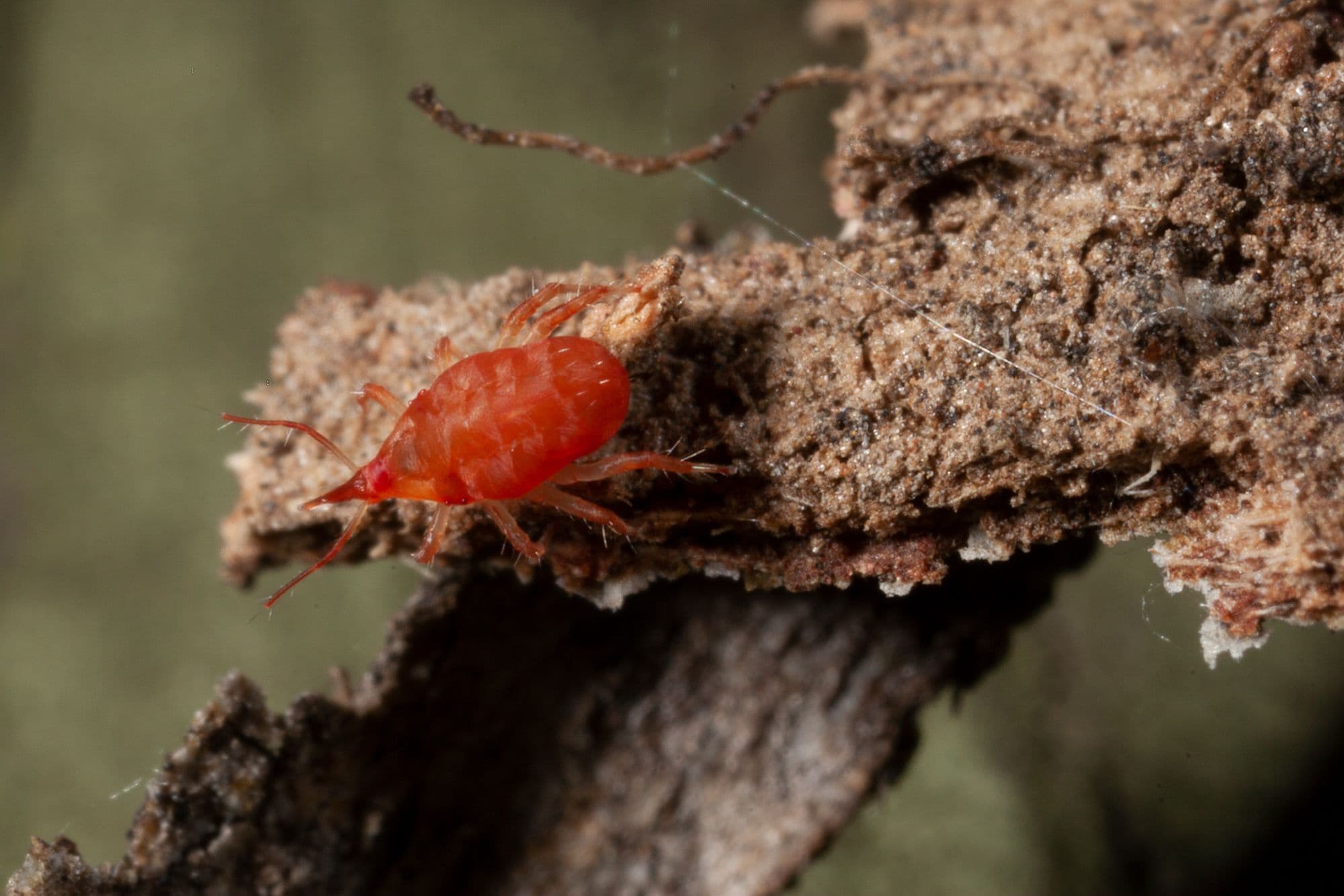Summary
Two-spotted mite have a very wide host range, and are an intermittent pest in maize, lentils, and broadleaf grasses.
Damage in grains is generally minor. Large numbers of these mites can indicate that insecticide use has impacted populations of beneficials which normally control them.
Chemical Management
Two-spotted mite is able to rapidly develop tolerance to insecticides and currently has resistance to over 10 different modes of action.
When the same chemical active is used consistently it is predicted that two-spotted mites evolve resistance in 2-5 years.
It is important to avoid using synthetic pyrethroids and carbamates on other insects as they can lead to secondary outbreaks of two-spotted mite.
Resistance
Biological Management
Natural enemies are often effective at keeping two-spotted mites from causing extensive damage in grains.
Two-spotted mite are known to be effectively controlled by the predatory mite Phytoseiulus persimilis, as well as other predatory mites and Stethorus beetles (small black ladybeetles). Predatory mites such as Neoseiulus californicus, Typhlodromus occidentalis and Phytoseiulus persimilis are available to purchase for release.
Natural Enemies
Cultural Management
Due to their large host range, many weeds harbour this pest, therefore weed management will help keep numbers low.





